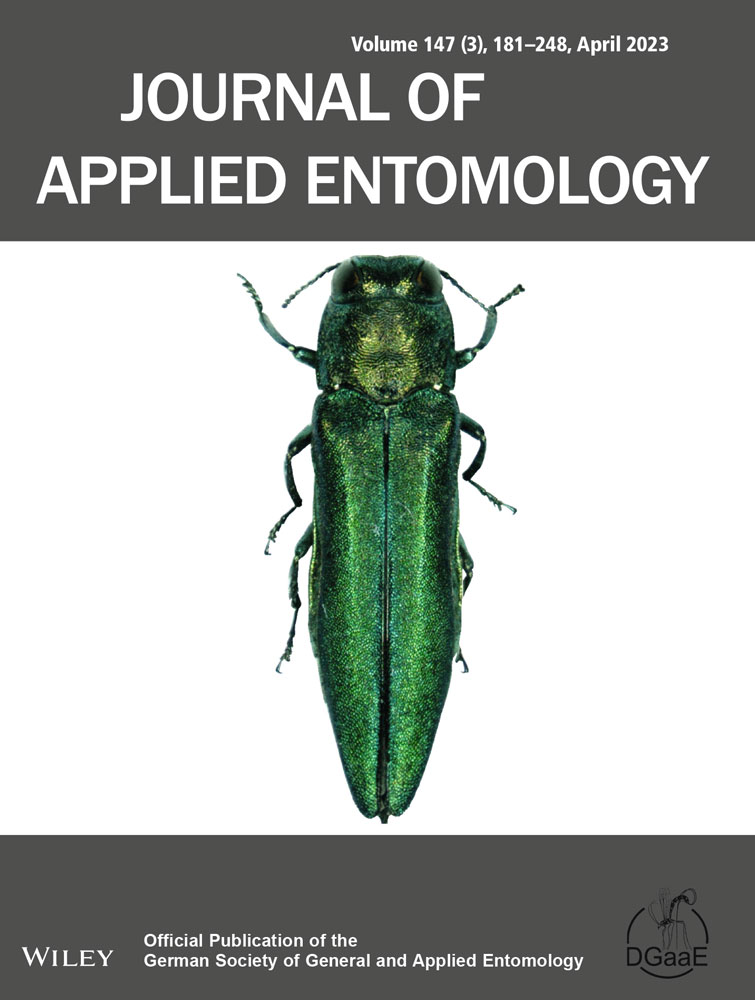Ver ítem
- xmlui.general.dspace_homeCentros Regionales y EEAsCentro Regional Mendoza - San JuanEEA San JuanArtículos científicosxmlui.ArtifactBrowser.ItemViewer.trail
- Inicio
- Centros Regionales y EEAs
- Centro Regional Mendoza - San Juan
- EEA San Juan
- Artículos científicos
- Ver ítem
Oviposition and olfactometry response of codling moth (Cydia pomonella) to quince (Cydonia oblonga) cultivars
Resumen
Quince (Cydonia oblonga Miller) is one of the common hosts of the codling moth, Cydia pomonella L. Knowledge of the chemical ecology of codling moth is based on its behaviour against apples and pears but not quince. Here, we present a laboratory study on olfactometry and oviposition behavior preference of mated females and neonate larvae of codling moth against four quince cultivars. Oviposition of mated females was evaluated on dual-choice test, whereas
[ver mas...]
Quince (Cydonia oblonga Miller) is one of the common hosts of the codling moth, Cydia pomonella L. Knowledge of the chemical ecology of codling moth is based on its behaviour against apples and pears but not quince. Here, we present a laboratory study on olfactometry and oviposition behavior preference of mated females and neonate larvae of codling moth against four quince cultivars. Oviposition of mated females was evaluated on dual-choice test, whereas olfactometry response was evaluated in
a Y-tube olfactometer. Neonate larvae were evaluated in a dual-choice test between pieces of fruit of quince cultivars in pairwise comparisons. In the Y-tube olfactometer assay, mated females always responded positively to the fruit-scented arm to quince
fruit volatiles. Smyrna and Champion cultivars showed significant differences in the time that mated females spent in the fruit-scented
arm. In the oviposition assay, all pairwise comparisons showed significant differences in the number of the eggs laid, with Smyrna and Champion being the cultivars most preferred. No significant differences were detected in dual choice of neonate larvae. All comparisons elicited the behaviour of contacting the fruit source. Based on the potential emission of recognized kairomones and the results found here, cultivars Smyrna and Champion are suggested as cultivars most susceptible to codling moth infestation.
[Cerrar]

Autor
Gomez, María Pía;
Jofré Barud, Flavia;
Díaz, Ariel;
Lopez, María Liza;
Fuente
Journal of Applied Entomology : 1-6 (First published: 10 March 2023)
Fecha
2023-03
Editorial
Wiley
ISSN
1439-0418
Formato
pdf
Tipo de documento
artículo
Palabras Claves
Derechos de acceso
Restringido
 Excepto donde se diga explicitamente, este item se publica bajo la siguiente descripción: Creative Commons Attribution-NonCommercial-ShareAlike 2.5 Unported (CC BY-NC-SA 2.5)
Excepto donde se diga explicitamente, este item se publica bajo la siguiente descripción: Creative Commons Attribution-NonCommercial-ShareAlike 2.5 Unported (CC BY-NC-SA 2.5)


